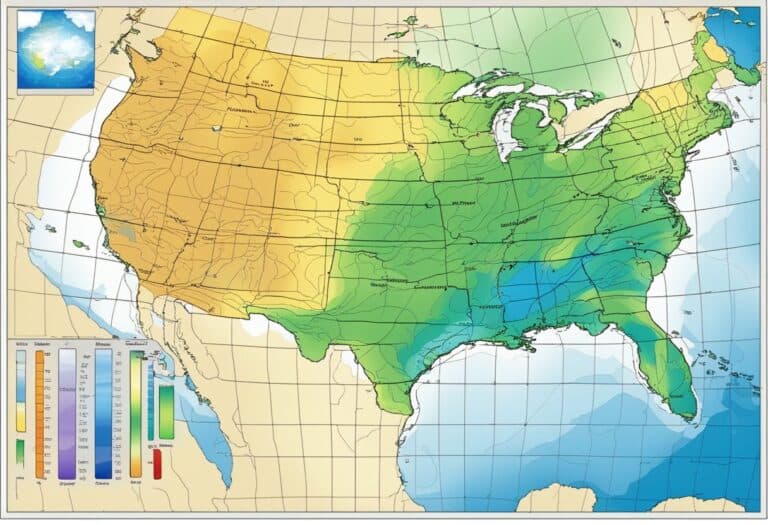In various contexts, especially related to atmospheric conditions, you might come across the abbreviation “WX.”
This shorthand notation for “weather” is commonly used in multiple fields that require quick and efficient communication. Its concise nature allows for rapid exchange of information pertinent to meteorological conditions, which can be critical in arenas such as aviation, marine navigation, and even casual weather discussions.
The use of WX as an abbreviation for weather finds its roots in Morse code and has been carried over into modern communications, particularly where brevity is essential. It has become standardized in many industries and continues to be integral for reporting and forecasting weather.
By understanding this abbreviation, you can better interpret and convey weather-related information in both professional and personal situations.
WX, short for weather, is a common abbreviation used in various fields for quick communication. It originated in Morse code and remains crucial for efficient weather reporting in aviation, radio, and broadcasting. Understanding WX helps interpret weather information across diverse platforms.
Origin and History

When you’re deciphering the origins of the abbreviation “wx” for weather, you’re tapping into a rich tapestry of communication technology history. This single term encapsulates advancements from the telegraph to today’s digital communications, highlighting the progression of shorthand techniques essential for timely and efficient information exchange.
Morse Code and Telegraph Origins
Samuel Morse, the inventor of Morse code, catalyzed a communication transformation with the telegraph in the early 19th century. Morse code was a system of dots and dashes representing letters and numbers, enabling long-distance communication over wires. In this framework, brevity was paramount—each second saved was crucial. “Wx,” as an abbreviation for weather, likely has its conceptual roots here, where concise codes such as “Q-codes” were developed to communicate complex information swiftly and efficiently.
Adoption in Radio and Aviation
As radio technology emerged and aviation took flight, the need for brevity and clarity soared to new heights. In radio communication, particularly in aviation and maritime contexts, “wx” became universally recognized shorthand for weather reports, which are critical for the safe operation of aircraft and ships. It’s a product of the operational norms where every second counts, and clarity is non-negotiable. “Wx” seamlessly integrated into these fields, epitomizing the continual evolution of linguistic efficiency in technical and safety-critical environments.
Usage in Communications
The abbreviation “wx” stands for “weather” and is commonly used in a variety of communication contexts where brevity is essential. You’ll encounter this shorthand in weather broadcasting, amateur and ham radio communications, as well as in aviation weather reports, where quick and clear information transfer is critical.
Weather Broadcasting
In the realm of weather broadcasting, the term “wx” is often used to expedite the transfer of weather information. For instance, the National Weather Service (NWS) may use such abbreviations to quickly note weather conditions in reports. It’s essential for you to recognize that “wx” could represent any weather condition when you are tuning into weather radio broadcasts or seeking updates for your area.
- Example: “Tonight’s wx: clear skies, low 41F.”
Amateur and Ham Radio
For amateur and ham radio enthusiasts like yourself, the abbreviation “wx” is a tool to efficiently exchange weather information. Whether you are in the field reporting storm conditions or casually discussing the weather with a fellow ham radio operator, “wx” is shorthand you’ll often hear. Common prowords that accompany “wx” include “ck” (check), “ga” (go ahead), and “ob” (observation).
- CK Report: “WX ck at hr indicates heavy rainfall.”
- GA Usage: “WX update pls, ga.”
Aviation Weather Communication
Lastly, for those involved in aviation, “wx” becomes a cornerstone in weather communication, directly affecting flight safety and operations. Aviators and ground operators, you utilize this abbreviation when conveying crucial weather details, from pre-flight briefings to in-flight updates. Specific codes such as “METAR” (aerodrome routine meteorological report) and “TAF” (terminal aerodrome forecast) integrate “wx” to denote weather components.
- METAR: “METAR KXYZ 121753Z AUTO 14021G26KT 10SM -RA BKN023 OVC033 22/18 A2992 RMK AO2 SLP134 P0000 60000 T02170178 10217 20189 58010”
- TAF: “TAF AMD KXYZ 121720Z 1218/1318 14015G25KT P6SM VCSH BKN020 OVC035”
By incorporating “wx” into your vocab, you’re maintaining industry standards for efficient and effective communication across various platforms.
Weather Reporting and Forecasting
Understanding the intricacies of weather reporting and forecasting allows you to better interpret the information affecting your day-to-day activities. This section will help you make sense of weather forecast symbols and the technology behind radar and satellite usage, which are crucial for accurate weather prediction, particularly for severe weather conditions.
Weather Forecast Symbols
When you look at a weather report, you’re faced with an array of symbols that depict different weather conditions. For instance, a sun symbol suggests clear skies, while a cloud with two lines underneath indicates rain within 30 hours. You’ll often find that these symbols are standardized across different forecasting services, which makes it easy for you to recognize patterns and prepare for upcoming weather changes.
Weather Radar and Satellite
Weather radar is your go-to tool to observe precipitation. It provides real-time information on rain or snowfall in your area, often essential in predicting severe weather. Its ability to map precipitation helps in issuing timely warnings.
On the other hand, weather satellites keep an eye on the atmosphere from space. They offer a broader perspective, tracking the movement of storm systems and cloud patterns that may not be immediately apparent at ground level. By monitoring storm systems, satellites play a key role in forecasting severe weather days in advance, enabling preparedness for whatever the skies may hold.
Impact on Modern Language
The abbreviation “wx” for weather exemplifies how language adapts to technological and societal changes, especially in the realm of digital communication.
Social Media and Hashtags
In the fast-paced world of social media, brevity is key. Abbreviations like “wx” thrive amidst character limits and the need for quick comprehension. On platforms such as Twitter, where hashtags collate topics, “#wx” allows you to quickly find and participate in conversations about the weather. This shorthand notation isn’t just for convenience; it’s become an integral part of social media language, enabling succinct and immediate sharing of information.
Glossary of Weather Abbreviations
Your understanding of weather discourse, especially in professions such as aviation or maritime, is enhanced by a glossary:
| Abbreviation | Meaning |
|---|---|
| wx | Weather |
| temp | Temperature |
| RH | Relative Humidity |
| vis | Visibility |
| fcst | Forecast |
This glossary of weather abbreviations is not exhaustive, but includes some of the key terms you’ll encounter frequently. Embracing this abbreviated language enhances your ability to decode and convey meteorological information swiftly.
Frequently Asked Questions
In this section, you’ll find answers to common inquiries about the abbreviation ‘WX’ and its usage in weather-related contexts.
What does the abbreviation ‘WX’ stand for in meteorological contexts?
‘WX’ is a shorthand notation for ‘weather’ used by meteorologists and enthusiasts alike when discussing weather conditions and forecasts.
How is the term ‘WX’ used in aviation communication?
In aviation, pilots and air traffic controllers use ‘WX’ to communicate about weather conditions, which is critical for flight safety and navigation.
What are common weather abbreviations similar to ‘WX’?
Other common weather-related abbreviations include ‘TEMP’ for temperature, ‘RH’ for relative humidity, and ‘VIS’ for visibility.
Can the abbreviation ‘WX’ have specific meanings in different professions, such as medicine?
While ‘WX’ primarily denotes weather, it is not standard in medical contexts and typically does not hold a specific meaning in professional healthcare discussions.
How does ‘WX’ relate to terms like ‘climate’ and ‘precipation’ in weather discussions?
‘WX’ encompasses all aspects of current atmospheric conditions, including precipitation and temperature, but does not refer to the long-term patterns described by the term ‘climate.’
Does the abbreviation ‘WX’ appear in international weather reporting, and if so, how?
Internationally, ‘WX’ is recognized in weather reporting and is used in various formats, from written forecasts to verbal briefings in the aviation and maritime industries.







